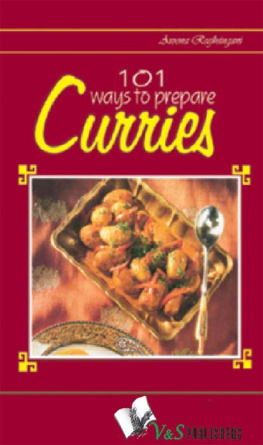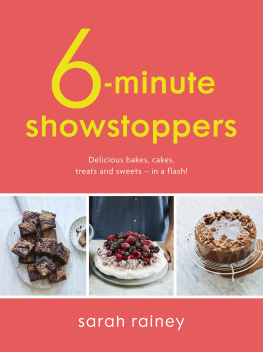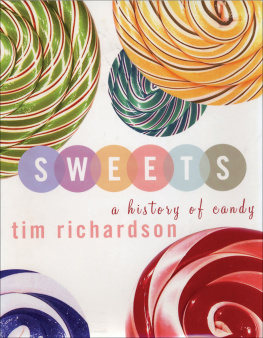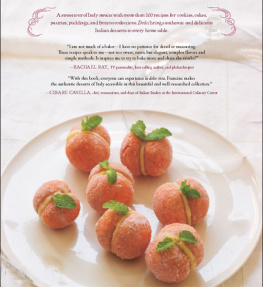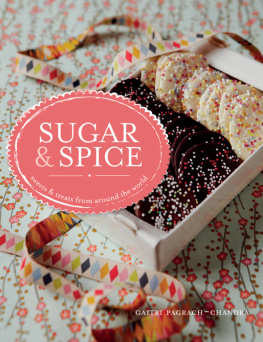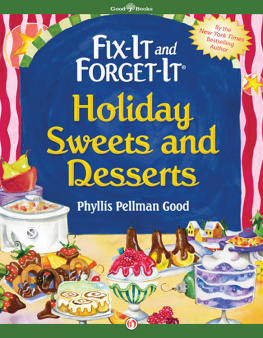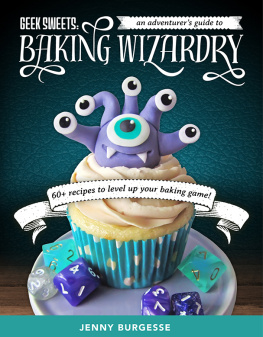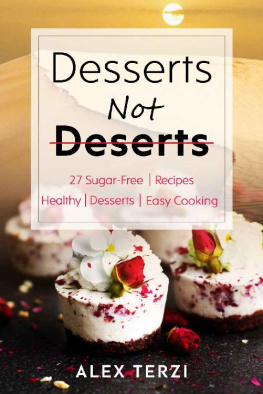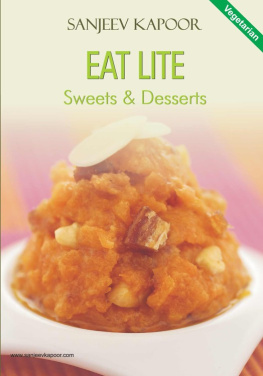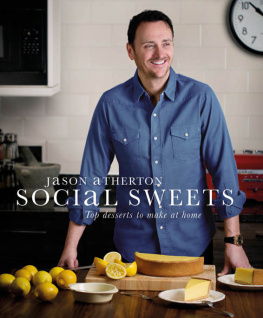
Published by Jaico Publishing House
A-2 Jash Chambers, 7-A Sir Phirozshah Mehta Road
Fort, Mumbai - 400 001
www.jaicobooks.com
Aroona Reejhsinghani
BEST OF INDIAN SWEETS AND DESSERTS
ISBN 81-7224-770-2
First Jaico Impression: 2001
Ninth Jaico Impression: 2008
No part of this book may be reproduced or utilized in
any form or by any means, electronic or
mechanical including photocopying, recording or by any
information storage and retrieval system,
without permission in writing from the publishers.
Printed by
Snehesh Printers
320-A, Shah & Nahar Ind. Est. A-1
Lower Parel, Mumbai - 400 013.
INDIAN SWEETS AND DESSERTS
India is perhaps the only country in the world where sweets are an integral part of foods. There is a large variety of sweets in every region while all are basically different to each other in all respects. Bengali rosgulla and north Indian burfi are bothe prepared from milk, but the way milk is used in each case is entirely different and so is the taste. Marathi shrikhand is yet another variety in the same family. No wonder, preparation of sweets is a highly specialised subject, verging on art.
The famous author of cookery books, Aroona Reejhsinghani has for the first time brought together in this book all the sweets and desserts prepared in all parts of India.
Every housewife now stands to benefit by it.

I n this book I have given you all the sweets and desserts eaten by the various Indian communities right from the principal sweetmeats which are only made and sold in the bazars to the very ordinary sweetmeats which can be easily prepared at home which will prove a real treat for both young and old. I hope you will have many, many sweet and happy hours making, serving and eating these sweets and desserts.
AROONA REEJHSINGHANI
Introduction
Indians have an unparallel sweet tooth which in some parts of India especially in Gujarat and Maharashtra is evidenced by the custom of beginning a meal with a sweet. But it is the Bengalis amongst all the communities who beat everybody in consuming sweets. They sometimes take only sweets for a meal. They serve sweets on all important festivals and ceremonies which are eaten in massive quantities on these occasions. One can even write a sonnet in praise of the delectable flavour of Bengali sweets. Not only in Bengal, but each community in India has its own special sweets which are a delight to eat and to behold.
Rosgullas, sandesh, gulabjamuns and firnis are used on festive occasions while delicious tea-time halwas, and make ahead sweetmeats like pedas, jalebies and burfies are kept aside for unexpected guests, the simple laddus are for kids. There is an infinite variety of sweetmeats to fascinate both young and old alike.
Besides sweetmeats there are a number of delightfully delicious desserts which are consumed by the millions in both our small villages and our sophisticated communities, for an Indian meal is not complete until it ends with something sweet. Desserts are consumed for their nutritional value. A dessert in India is mostly made with milk, nuts, fresh and dried fruits. The ingredients are not only highly nutritious but at the same time they make a dish very satisfying, appetizing and tasty.

Cooking Terms Explained
|
|---|
| Bake: | to cook food by dry heat usually in an oven. |
| Beat: | to beat with a rotary beater, fork or a spoon any liquid or semi-liquid food with the express purpose of mixing that food thoroughly and making it smooth |
| Brine: | a solution of salt and water used for preserving foods like meat or sometimes it is used for marinating foods used for making pickles. |
| Blend: | to combine several ingredients together to form a smooth content. |
| Boil: | to heat a mixture or a liquid until bubbles appear on the surface and vapor starts rising; also to continue the process thereafter. |
| Boiling point: | the temperature at which a liquid begins to bubble around the edges. |
| Broil: | the food which is to be broiled should be placed directly under or over heat. When brown on one side, turnover and cook till done. |
| Blanch: | the food which is to be blanched should be covered with cold water. The water should be brought to a rolling boil and kept at the boiling temperature until the skin of the food which is being blanched begins to wrinkle. The pan should be immediately removed from fire and the food should be drained thoroughly. The food should be covered with cold water, and the peel of the food should be removed gently with fingers. |
| Batter: | mixture of flour and liquid usually combined with other ingredients such as sugar, eggs and baking powder. The consistency of batter should be such that it can be stirred with a spoon and should be of a fairly thin consistency to be poured out from a spoon. |
| Baste: | to brush or spoon liquid over a food while marinating or cooking that particular food to prevent it from drying out. |
| Brush: | to spread seasonings, butter or other coating lightly on a food. |
| Beat the eggs lightly: | beat the yolks and whites together only just enough to mix them well. |
| Beat the yolks until light and thick: | beat them until they become as thick as cream and a little light in colour. |
| Beat the whites to a froth: | beat until they are light and frothy. |
| Beat the whites to a stiff froth: | beat until stiff and there is no liquid left in the bowl. |
| Caramalise: | melt sugar slowly over a low heat until brown and of sticky consistency. |
| Chill: | to cool food by placing over ice or in the fridge. |
| Chop: | to cut food into small pieces. |
| Combine: | to join two or more ingredients together. |
| Cream: | to soften ingredients by beating with a spoon, rotary or electric beater until soft and of creamy consistency. |
| Cut in shortening: | to mix shortening with flour by using two knives or a pastry blender until shortening is distributed evenly. |
| Dice: | to cut foods in small cubes of uniform size and shape. |
| Dissolve: | to melt. |
| Dust: | to sprinkle a food lightly with a dry coating such as bread crumbs, flour or sugar. |
| Drain: | to free food from liquid. |
| Deep fry: | to fry in plenty of boiling ghee or vegetable oil. |
| Dripping: | fat or juices that cook out of a food. |
| Dough: | a mixture of flour and liquid usually with other ingredients added. A dough is thick enough to knead or roll but is too stiff to stir or pour. |
| Flake: | to separate food gently with a fork. |
| Fold in: | to fold is the slowest form of mixing. |
| Fry: |
Next page

